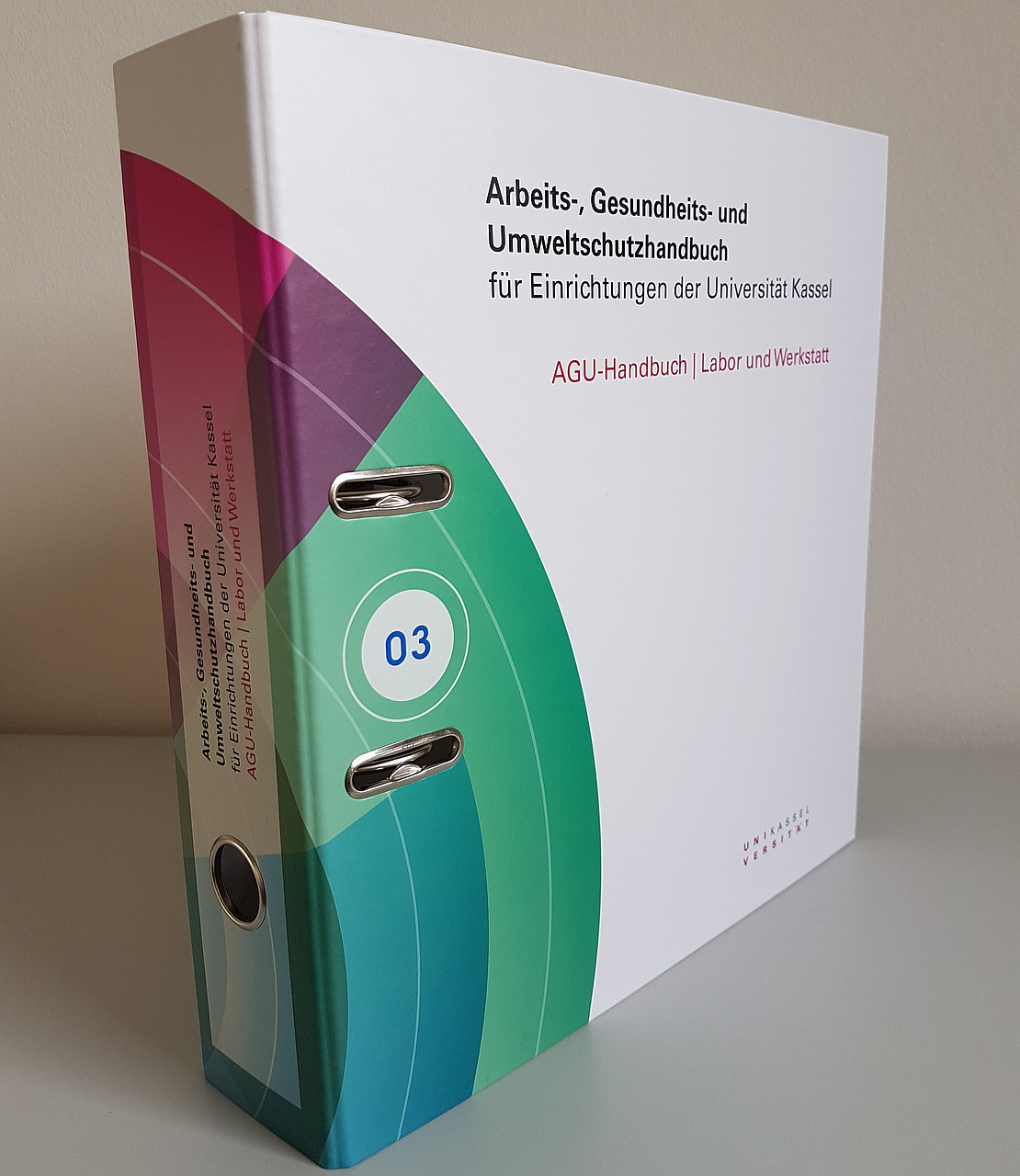AGU-Laboratory/Workshop Manual
Overview

A well-functioning occupational health and safety organization is essential to regulate internal responsibilities in occupational health and safety.
If the head of the facility does not fully perform the tasks in the AGU himself, responsibilities for individual tasks can be defined.
Safety officers support the line managers in improving occupational safety and health protection and provide information about identified safety problems.
The purpose of the delegation of duties is to clearly clarify the distribution of tasks in the working group as well as the competencies and responsibilities for the various tasks.
- Form for the transfer of duties in the AGU
- Forms for appointment:
Laser protection officer, crane operator, operator of elevating work platforms, industrial trucks
The risk assessment is of particular importance in occupational health and safety. It must be carried out before the start of all work processes.
In order to determine whether preventive medical care is to be carried out, the "Occupational Medical Care Assessment Form" has been drawn up, which is to be completed jointly by the supervisor and the employee.
The skin protection plan lists the skin protection, skin cleaning and skin care products to be used to protect the skin. It must be made known to the employees in the form of a notice.
Suitable PPE must be provided for activities where a health hazard cannot be prevented by technical or organizational measures.
The laboratory and workshop regulations describe the hazards that may occur, specify protective measures and rules of conduct, and regulate the handling of hazardous substances.
Work equipment must be inspected at recurring intervals. In order to be able to do this on time, the work equipment must be compiled in a cadastre.
The Hazardous Substances Ordinance requires a register of the hazardous substances used in the company. This can be done with an Excel spreadsheet or with an electronic hazardous substances register.
Operating instructions describe the hazards to people and the environment posed by hazardous substances, machines and work processes and specify protective measures and rules of conduct.
Hazardous waste is accepted at all locations on specified dates. Certain criteria apply for acceptance, which we have compiled on our homepage.
Instruction must be provided upon hiring, changes in job duties, introduction of new work equipment or a new technology prior to starting the job.
Body and eye safety showers must be tested for functionality at least once a month by an authorized person.
Fume cupboards must be regularly maintained and their functionality checked and documented. The test must be carried out at least once a year by a competent person.
The systematic inspection of ladders and steps can be carried out, for example, with the aid of a checklist. Ladders with defects must be withdrawn from further use.
Safety cabinets for flammable liquids must be tested regularly by a competent person. Testing should be performed at intervals of no more than one year.
In accordance with the accident prevention regulation DGUV V3 "Electrical installations and equipment", the Faculties, Departments and Central Facilities are obliged to carry out regular safety inspections of the electrical equipment and work equipment in their area of responsibility. All stationary (usually every 4 years) and all mobile electrical equipment (usually every 2 years) must be inspected.
For the execution of the tests, the service was put out to tender and a framework agreement was concluded with the commissioned testing company. The contact person within the university is the Occupational Safety and Environmental Protection Group, Mr. Bedi.
In order to relieve the financial burden on the Faculties, departments and central institutions, the audits are supported by a subsidy of 80%. You can find out which services are to be provided by the testing departments in the attached information letter as well as in the workflow.
Cooling lubricants must be tested according to a test plan. Necessary measures must be carried out on the basis of the test results.
Fire protection measures are defined in the fire protection regulations. Compliance with the regulations is necessary so that everyone can leave the building safely in the event of a fire.
First aid boxes must be checked regularly and checked for completeness. It is recommended that these checks be carried out at least once a year.
An accident report is always required if a work or commuting accident results in treatment by the transit physician, an inability to work for more than 3 calendar days.
The emergency and alarm plan provides a quick overview of the most important telephone numbers and contacts in case of emergency. We provide you with a template for further processing.

